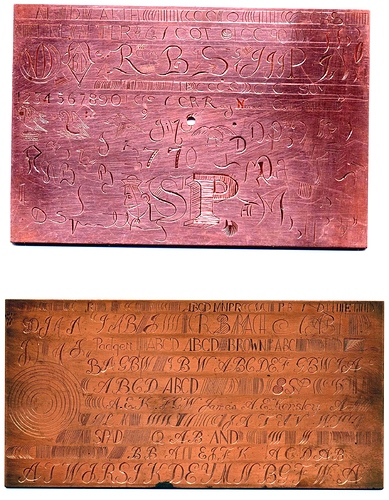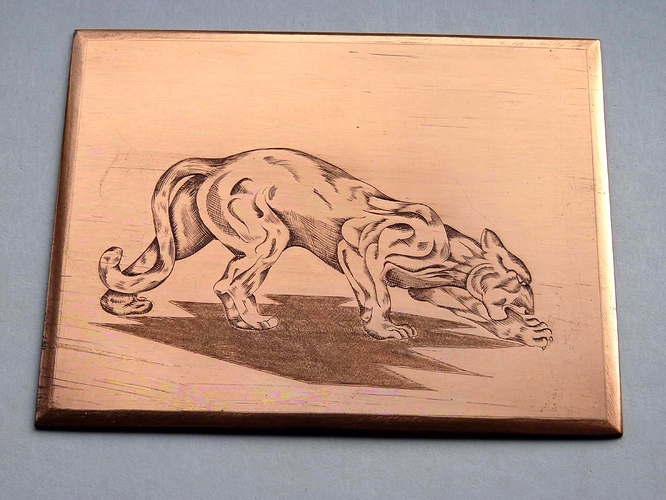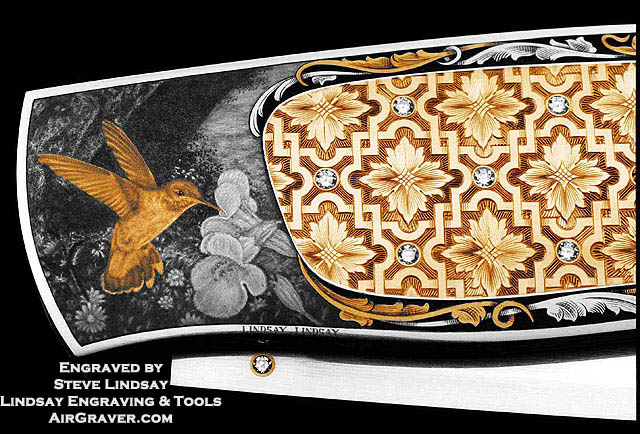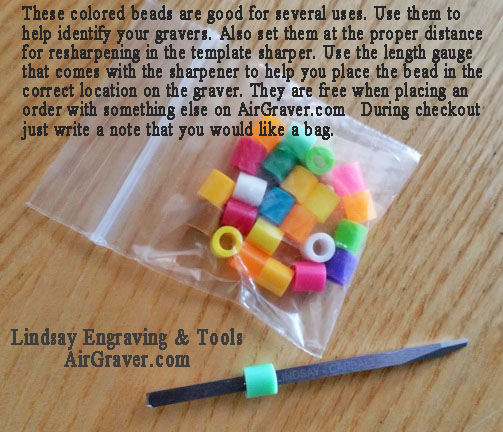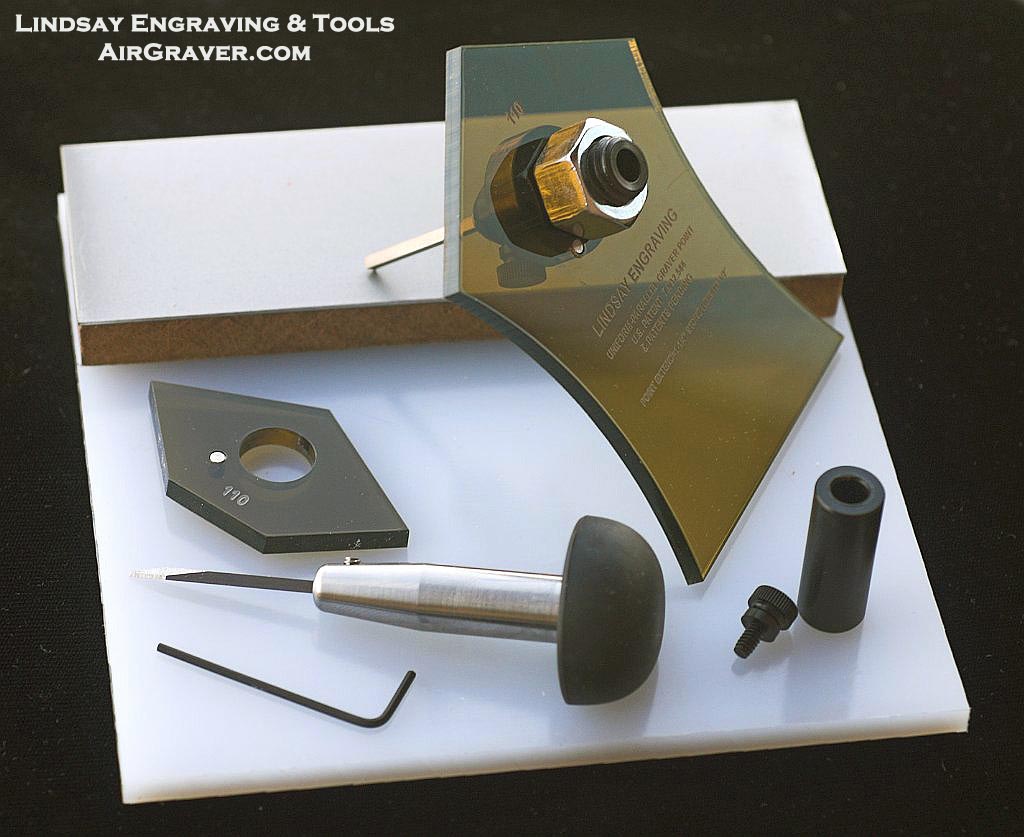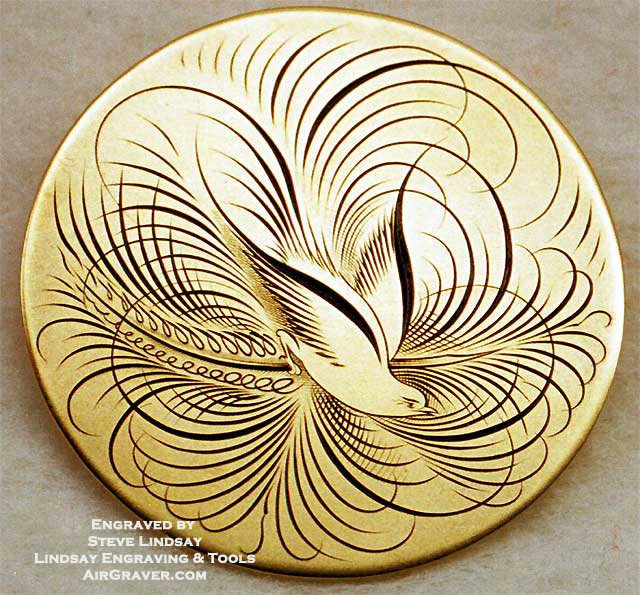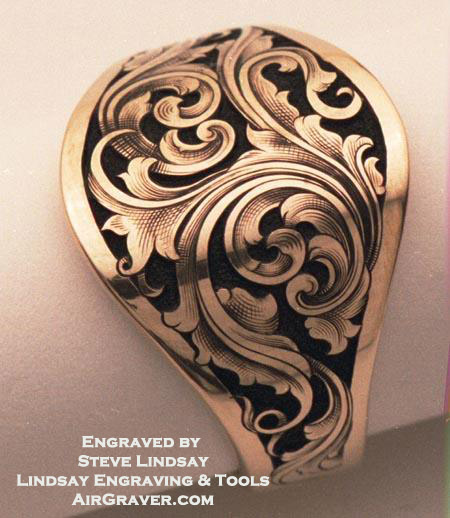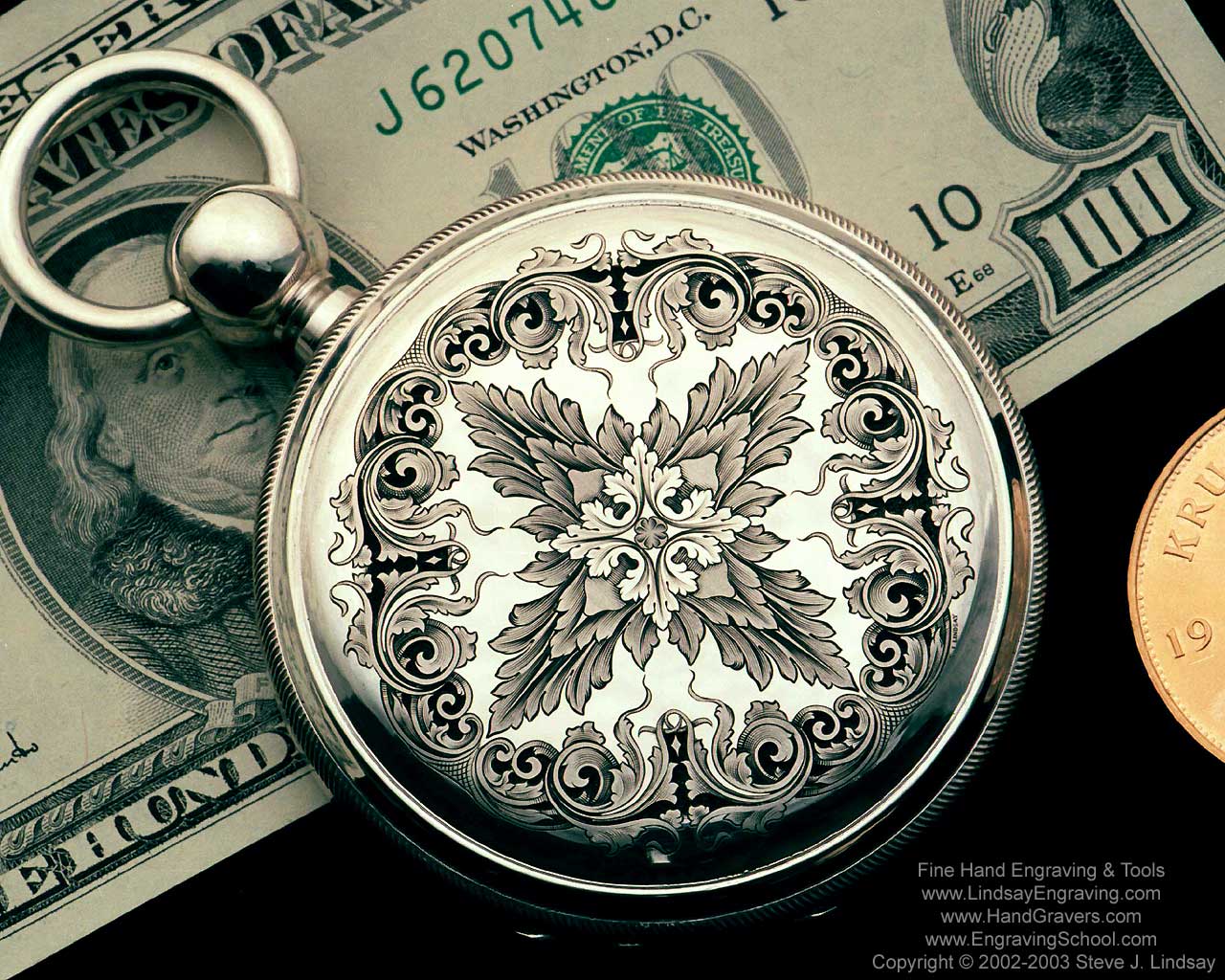I was going to recommend that you check with Steve Lindsay. He has pretty much everything you’ll need to decide if learning engraving is a journey you really want to pursue. He’s a great guy and really knows his stuff. His tools are absolutely top notch and he’s very helpful.
Another source that you will no doubt become familiar with is GRS. They also have many tools and are extremely helpful. They offer all kinds of classes and clinics, one or more of which may be just the kind of experience you need to decide if engraving is for you before making an investment in tools you may not use. You can get a catalog with a phone call to (800) 835-3519 or you can look at their website, grstools.com. Personally, when it comes to air powered hand pieces though, the Lindsay Airgraver Classic is my favorite. I have both the GRS Gravermax and Lindsay systems, and there really isn’t any comparison.
There are many different disciplines involved in engraving. Most people tend to want to run before they can walk and begin at the wrong place, trying to actually cut metal with no real knowledge of any of the other disciplines. The most important tool for an aspiring engraver to master is the pencil. My dad used to say “If you can’t draw it, you can’t cut it” and no truer words were ever spoken. In engraving circles as in many other artistic endeavors, it’s frowned on to copy other people’s designs and claim the engraving as your own work. If you want to earn a solid reputation from your fellow engravers, you must be able to design your own work.
The next most important and under-valued skill is graver preparation and sharpening. Square gravers are the most used shape in lettering and decorative engraving. They are made from square blanks and I would say that shaping and sharpening the blanks using the Lindsay sharpening system is the easiest way to go. It cuts the learning curve from months or even years to a few hours.
Other gravers you might find useful later on when your portfolio and skill level increases beyond the basics include the flat bottom graver known as a “Scorper” or “Square Scorper” on your side of the pond, the round bottom “Dotter” and the “Lozenge” which is a “diamond” shaped, nearly square graver (more tall than wide) which can be sharpened like a square script graver or shaped with a flat belly ground on the bottom and used as scorper. The lozenge scorper is useful when clean and sharp sloped sides are desired on the sides of a straight or wide cut rather than the square sided cut produced by a standard flat graver or square scorper, which can end up a little ragged.
Another graver style that is very useful in jewelry engraving is the line graver sometimes called a “Liner” or a “Stitch” graver as the old-schoolers call it. The numbering system sounds confusing but it really isn’t. The first number refers to the number or width of the graver, the second shows the number of lines it produces. Liners are commonly used for producing florentine finishes (a sort of cross-hatched pattern) as well as providing for a quick method of filling in background or filling wide lines on lettering styles like Old English.
An onglette graver, sometimes called a “knife graver” or “knife edge”, is a very steeply ground graver style similar in shape to a knife blade. It is mostly used for stone setting, although it is useful in engraving for undercutting for inlay work. The old school, Old English term for an onglette graver is a “Spitzsticker”.
An engraver’s block is almost a necessity for holding the work, but an inexpensive method that is useful for holding practice plates is to make a round wooden disk about five inches in diameter and about 1 1/2 inches thick. Drill four holes on a flat side and use the heads of flat screws to hold the plate. The disk is supported on a sandbag or similar heavy pillow so that it can be turned by the free hand. A flat, round shape, slightly larger than the wooden disk is best, if available. Round leather, lead shot filled pads for working with platters and plates are ideal for this purpose. They used to be carried by engraving and jewelry supply companies, but I haven’t seen one for sale in many years. A Google or Ebay search might turn one up. Contrary to popular thought, the graver isn’t pushed into the work, the work is turned into the graver. The hand and wrist holding the graver remains fixed, using only twist to control line width
A few books that you might find helpful and that should be in your library if you want to find out exactly what’s involved in artistic jewelry engraving and lettering:
“The Art of Engraving” by James B. Meek. If you only get one book, this is the one.
“Engraving on Precious Metals” by A. Brittain and P. Morton
“The Jewelry Engraver’s Manual” by R. Allen and John J. Bowman.
These three books are kind of old school. The last two are actually text books from the 1950’s, so they are a little short on new technologies. But it sounds like that’s more what you are looking for than power assisted engraving. Engraving as an art-form has been around for centuries if not millennia, but air-powered tools and high-tech sharpening tools have only been with us for a few decades. Old-school tools and techniques still work just fine, they just take longer to figure out and master.
For learning how to use a pencil for designing scrolls and other decorative work:
“Advanced Drawing of Scrolls” by Ron Smith is an absolute treasure. This is more than just a how-to book of scroll design and construction. Through several short essays, Ron Smith delves into his life-long journey of engraving, how to price your work, how to market your skills and even the history and philosophy of engraving design as an art form of it’s very own. This is a wonderful book even if all you want to do with engraving is apppreciate the art of others.
I hope this is at least a little helpful. Learning engraving is not easy or quick, it’s the pursuit and journey of a lifetime. The disciplines are many and the learning curves are steep. But if you have some persistence (stubborness?) and aren’t prone to quitting at the first hardship, it can provide you with never-ending challenge and personal satisfaction.
Dave Phelps
